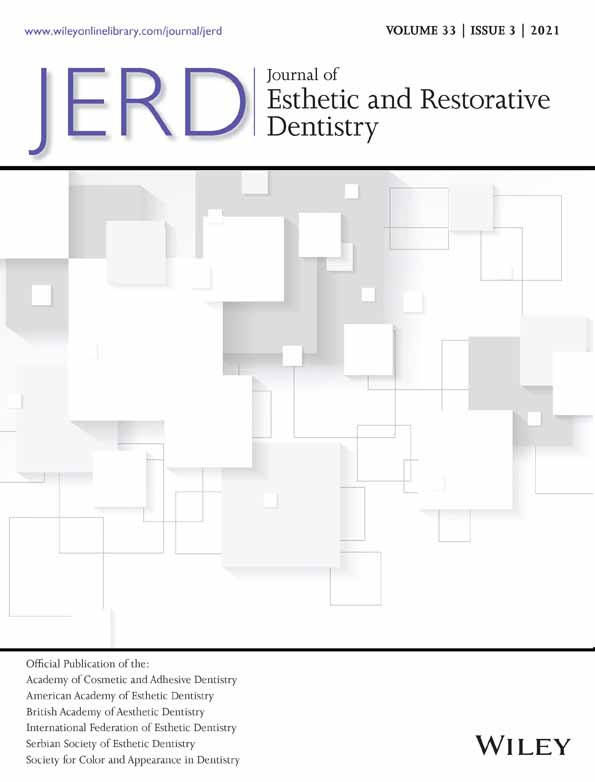The injectable resin composite restorative technique: A case report
Abstract
Objective
To describe the use of the injectable resin composite restorative technique with a flowable resin material, in a clinical case with esthetic problems associated with irregular tooth anatomies, allied with a finishing, and polishing protocol due to staining after 1 year of use.
Clinical Considerations
The presented case report helped to achieve an immediate highly esthetic restoration with appropriate width proportions based on a previous wax-up. After 1 year of use, restorations presented staining; therefore, finishing and polishing procedures were required to re-achieve acceptable esthetic results and thus increase restoration's survival.
Conclusions
The use of the presented technique allowed to obtain a simple and predictable workflow; however, care must be taken on the follow up of the restorations due to intrinsic characteristics of the flowable resin material.
Clinical Significance
The use of the presented injectable technique helped on obtaining a precise anatomy replicating a diagnostic wax-up, thus improving marginal precision and achieving a highly esthetic and functional immediate outcome, with an easy workflow when appropriately planned and executed. However, it also presented low color stability after 1 year of use only, thus, requiring attention from clinicians in regard to its maintenance over time.




